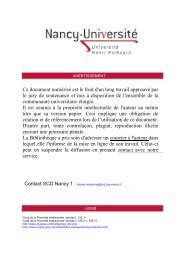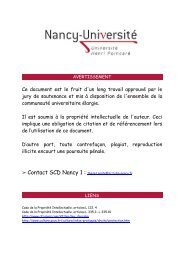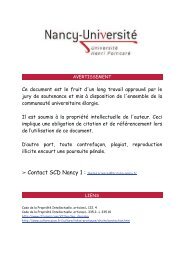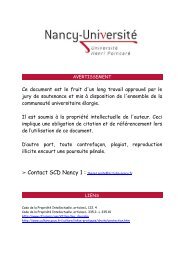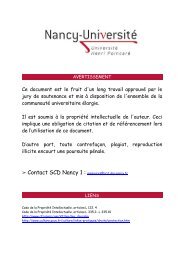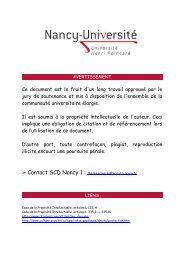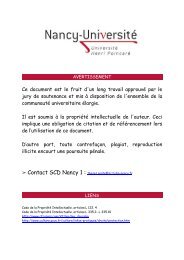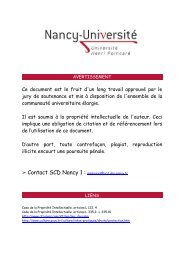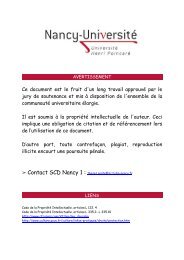Peroxisome proliferator-activated receptors are key regulators in cell differentiation 165 192. 193. 194. 195. 196. 197. 198. 199. 200. 201. 202. Holden, S., Tomoyasu, S. and Koeff<strong>le</strong>r, H.P. 2000 . Suh, N., Wang, Y., Williams, C.R., Risingsong, R., Gilmer, T., Willson, T.M. and Sporn, M.B. 1999 Cancer Res. 59, 5671. Tsibris, J.C.M., Porter, K.B., Jazayeri, A., Tzimas, G., Nau, H., Huang, H., Ku<strong>par</strong>adze, K., Porter, G.W., O'brien, W.F. and Specally, W.N. 1999 Cancer Res. 59, 5737. Gervois, ·P., Torra, LP., Chinetti, G., Grotzinger, T., Dubois, G., Fruchart, J.C., Fruchart-Najib, J., Leitersdorf, E. and Staels, B. 1999 Mol. Endocrinol. 13, 1535. Casas, F., Domenjoud, L., Rochard, P., Hatier, R., Rodier, A., Daury, L., Kremarik-Bouillaud, P., bécuwe, P., Kel<strong>le</strong>r, J., Schohn, H., Wrutniak Cabello, C., Cabello, G. and Dauça, M. 2000 FEBS Lett. 478, 4. Casas, F., Pineau, T., Rochard, P., Rodier, A., Daury, L., Dauça, M., Cabello, G. and Wrutniak-Cabello, C. 2000 FEBS Lett. 482, 71. Kroll, T., Sarraf, P., Pecciarini, L., Chen, c., Muel<strong>le</strong>r, E., Spiegelman, B. and F<strong>le</strong>tcher, 1. 2000 Science 289, 1357. Mansouri, A., Chowdhury, K. and Gruss, P. 1998 Nat. Genet. 19, 87 . Gôttlicher, M., Widmark, E., Li, Q. and Gustafsson, J.A. 1992 Proc. Natl. Acad. Sei. USA 89, 4653. Tugwood, J.D., Aldridge, T.C., Lambe, K.G., MacDonald, N. and Woodyatt, N.1. 1996 Ann. NY Acad. Sei. 804, 252. Schmidt, A., Endo, N., Rut<strong>le</strong>dge, S.1., Vogel, R., Shinar, D. and Rodan, G.A. 1992 Mol. Endo. 6, 1634. Amri, E.-Z., Bonino, F., Ailhaud, G., Aburnrad, N.A. and Grimaldi, P.A. 1995 J. Biol. Chem. 270, 2367. 203. 204. 205. 206. 207. 208. 209. 210. 211. 212. 213. 214. Tontonoz, P., Hu, E., Graves, RA., Budavari, A.L and Spiegelman, B.M. 1994 Genes Dev. 8, 1224. Guardiola-Diaz, H.M., Rehnmark, S., Usuda, N., Albrektsen, T., Feltkamp, D., Gustafsson, J.A. and A<strong>le</strong>xson, S.E. 1999 J Biol Chem 274,23368. Greene, M.E., Blumberg, B., Kwan, K., Greene, G.L. and Nimer, S.D. 1997 Adv Exp Med Bio1400A, 253. Sher, T., Yi, H.F., McBride, O.W. and Gonza<strong>le</strong>z, F.J. 1993 Biochemistry 32, 5598. Ruyter, B., Andersen, O., Dehli, A., Farrants, A.K.O., Gjoen, T. and Thomassen, M.S. 1997 Biochim Biophys Acta 1348, 331. Hughes, S., Zelus, D. and Mouchiroud, D. 1999 Mol. Biol. Evol. 16, 1521. Diot, C. and Douaire, M. 1999 Pou1t. Sei. 78, 1198. Takada, L, Yu, RT., Hu, H.E., Lambert, M.H., Montana, V.G., Kliewer, S.A., Evans, R.M. and Umesono, K. 2000 Mol. Endocrinol. 14, 733. Aperlo, C., Pognonec, P., Saladin, R., Auwerx, J. and Bou1ukus, K.E. 1995 Gene 162, 297. Bell, A.R, Savory, R, Hor<strong>le</strong>y, N.J., Choudhury, A.L, Dickins, M., Gray, T.1., Salter, A.M. and Bell, D.R 1998 Biochem J. 332, 689. Sunvold, H., Brzozowska, A. and Lien, S. 1997 Biochem. Biophys. Res. Commun. 239,857. Grindf<strong>le</strong>k, E., Sundvold, H., Klungland, L. and Lien, S. 1998 Biochem. Biophys. Res. Commun. 249, 713.
~LSEVIER Biology of the <strong>Ce</strong>ll 94 (2002) 15-27 Biology of the <strong>Ce</strong>ll www.elsevier.com/locate/biocell Original artic<strong>le</strong> Expression of peroxisome proliferator-activated receptors alpha and gamma in differentiating human colon carcinoma Caco-2 cells Céci<strong>le</strong> Huin a, Hervé Schohn a,*, Renée Hatier b, Marc Bentejac c, Laurent Antunes d, François Plénat d, Maurice Bugaut c, Michel Dauça a aLaboratoire de biologie cellulaire du développement, EA 3446 "Proliférateurs de peroxysomes", Faculté des sciences, BP 239, 54506 Vandoeuvre-lès-Nancy cedex, France bEMllnserm 0014, laboratoire de microscopie é<strong>le</strong>ctronique, Faculté de médecine, BP 184, 54505 Vandoeuvre-lès-Nancy cedex, France CLaboratoire de biologie cellulaire et moléculaire, Faculté des sciences, 21000 Dijon cedex, France dLaboratoire d'anatomie pathologique, CHU Nancy, 54505 Vandoeuvre-lès-Nancy cedex, France Received 23 May 2001; accepted 26 June 2001 bstract The expression of peroxisome proliferator-activated receptors a (PPARa) and y (PPARy) was studied in the human adenocarcinoma aco-2 cells induced to differentiate by <strong>long</strong> teilli culture (15 days). The differentiation of Caco-2 cells was att<strong>est</strong>ed by increases in the :tivities of sucrase-isomaltase and alkaline phosphatase (two brush border enzymes), fatty acyl-CoA oxidase (AOX) and catalase (two ~roxisomal enzymes), by an e<strong>le</strong>vation in the protein <strong>le</strong>vels of villin (a brush border mo<strong>le</strong>cular marker), AOX, peroxisomal bifunctional lZyme (PBE), catalase and peroxisomal membrane protein of 70 kDa (PMP70), and by the appearance of peroxisomes. The expression - PPARa and PPARy was inv<strong>est</strong>igated by W<strong>est</strong>ern blotting, immunocytochemistry, Northern blotting and SI nuc<strong>le</strong>ase protection assay lring the differentiation of Caco-2 ceUs. The protein <strong>le</strong>vels of PPARa, PPARy, and PPARY2 increased graduaUy during the time-course - Caco-2 ceU differentiation. Immunocytochemistry revea<strong>le</strong>d that PPARa and y were localized in ceU nuc<strong>le</strong>i. The PPARYl protein was lcoded by PPARY3 mRNA because no signal was obtained for PPARYl mRNA using a specific probe in SI nuc<strong>le</strong>ase protection assay. The nount of PPARY3 mRNA increased concomitantly to the resulting PPARYl protein. On the other hand, the mRNA of PPARa and PPARY2 ere not significantly changed, sugg<strong>est</strong>ing that the increase in their respective protein was due to an e<strong>le</strong>vation of the translational rate. The ,<strong>le</strong> played by the PPAR subtypes in Caco-2 ceU differentiation is discussed. © 2002 Éditions scientifiques et médica<strong>le</strong>s Elsevier SAS ~ywords: Caco-2 cell; Int<strong>est</strong>inal differentiation; Peroxisome; Peroxisome proliferator-activated receptor , Introduction Peroxisome proliferator-activated receptors (PPARs) are anscription factors be<strong>long</strong>ing to the nuc<strong>le</strong>ar receptor su ~rfamily and have been initiaUy described as mo<strong>le</strong>cular rgets for compounds that cause peroxisome proliferation. Cl date, three isotypes of PPAR have been described in lmans: a (Sher et al., 1993), NUCI, also caUed ~ or 0 lchmidt et al., 1992) and y (Elbrecht et al., 1996; Fajas et ., 1997). There are three subtypes of PPARy mRNA, anscribed from three different promoters, which give rise , two proteins, PPARYl and Yz as the protein encoded by * Corresponding author. Fax: +33 38 391 2319. E-mail address:schohn@scbio1.uhp-nancy.fr (H. Schohn). PPARy3 mRNA is indistinguishab<strong>le</strong> from PPARYl (Fajas et al., 1997 and 1998). In humans, PPARa is present mainly in liver, heart and kidney, whose tissues exhibit high fatty acid metabolism and high peroxisome-dependent activity. PPAR~ is ubiquitously expressed in aU tissues t<strong>est</strong>ed, whereas PPARy predominates in adipose tissue, large int<strong>est</strong>ine, macrophages and monocytes (Mukherjee et al., 1994; Auboeuf et al., 1997; Marx et al., 1998; Ricote et al., 1998; Spiegelman, 1998). Consistent with their localization, the PPAR subtypes play different ro<strong>le</strong>s. After binding to specifie e<strong>le</strong>ments (PPREs), PPARa regulates the transcription of several target genes involved in lipid metabolism and homeostasis (Desvergne and Wahli, 1995; Lemberger et al., 1996; S0rensen et al., 1998). PPARy controls adipocyte (Chawla 2002 Éditions scientifiques et médica<strong>le</strong>s Elsevier SAS 1: S 0 2 4 8 - 4 9 0 0 ( 0 1 ) 0 1 1 7 8 - 9
- Page 1 and 2:
AVERTISSEMENT Ce document numéris
- Page 3 and 4:
Je remercie chaleureusement Monsieu
- Page 5 and 6:
VIII. ROLES DES PPAR DANS CERTAINES
- Page 7 and 8:
EXPRESSION DES PPAR AU NIVEAU DE LA
- Page 9 and 10:
A mon père, A mon beau-père,
- Page 11 and 12:
AINS : non steroid anti inflammator
- Page 13 and 14:
Les récepteurs activés par les pr
- Page 15 and 16:
CARACTERES GENERAUX SUR LE COLON F
- Page 17 and 18:
Se SEMAINE COUPE SAGnTAtB /' Ile SE
- Page 19 and 20:
allg le colique droit colon transve
- Page 21 and 22:
œlltllê ~Uc:iforme ' Figure 4 : S
- Page 23 and 24:
des glandes tubulaires. Les espaces
- Page 25 and 26:
La voie de transduction Wnt/Wingles
- Page 27 and 28:
l'homologue de TCF chez la Drosophi
- Page 29 and 30:
conduisent à des tumeurs desmoïde
- Page 31 and 32:
. facteurs transcriptionnels interv
- Page 33 and 34:
LES RECEPTEURS ACTIVES PAR LES PROL
- Page 35 and 36:
- un domaine E qui intervient dans
- Page 37 and 38:
III. DISTRIBUTION TISSULAIRE DES PP
- Page 39 and 40:
hétérodimères PPARlRXR se lient
- Page 41 and 42:
iW! 1341Oj)§ 16"q~xy,.'\12:,14 prO
- Page 43 and 44:
facteur de croissance par la voie M
- Page 45 and 46:
VI. INTERVENTION DES PPAR DANS LA D
- Page 47 and 48:
les fonctions endothéliales. Et-1
- Page 49 and 50:
c. PPAR et autres processus néopla
- Page 51 and 52:
CANCERS DU COLON ET PPAR 1. LES CAN
- Page 53 and 54:
Le terme de tubuleux est employé l
- Page 55 and 56:
musculeuse qui peut être dépassé
- Page 57 and 58:
La stadification tumoraux Le degré
- Page 59 and 60:
ganglions régionaux envahis. Leur
- Page 61 and 62:
éséquées dans le même temps op
- Page 63 and 64:
tumorale. Si les cancers colorectau
- Page 65 and 66:
colorectaux chez le rat ou la souri
- Page 67 and 68:
PPAR ~/û est également impliqué
- Page 69 and 70:
Les PPAR sont présents dans le col
- Page 71 and 72:
MATERIELS ET METHODES 1. MODELES BI
- Page 73 and 74:
puis retourné à l'aide d'une fine
- Page 75 and 76:
Dosage de l'activité de l'acyl GoA
- Page 77 and 78:
tlJ e SSGSFGFTEVQV T D 2" EIF 4]' P
- Page 79 and 80:
kDa A B -. - - ....... 94- 64- 43-
- Page 81 and 82:
MONTAGES LEGENDES • • antigène
- Page 83 and 84:
ensuite contre-colorée à l'hémat
- Page 85 and 86:
La révélation des complexes antig
- Page 87 and 88:
les cellules Caco-2 sont lysées en
- Page 89 and 90:
solution d'acétate de sodium 0,5 M
- Page 91 and 92:
ARN Sondes radioactives / hybridati
- Page 93 and 94:
Amorces sens Amorces antisens Réf
- Page 95 and 96:
pBSKS+. pBSK+/hPPARa, PBSKS+/hPPARy
- Page 97 and 98:
étudiée (figure 20). Nous avons r
- Page 99 and 100:
PPARa PPARB Amorces sens (5' vers 3
- Page 101 and 102:
Taq 1 coupe uniquement le fragment
- Page 103 and 104:
PCR semi-quantitative Une technique
- Page 105 and 106:
Amorces sens Amorces anti-sens Réf
- Page 107 and 108:
EXPRESSION DES PPAR AU COURS DU DEV
- Page 109 and 110:
Figure 21 : Etude par immunocytochi
- Page 111 and 112:
Figure 22: Etude par immunocytochim
- Page 113 and 114:
Figure 23: Etude par immunocytochim
- Page 115 and 116:
@ 12345678 404 pb- +-G3PDH 242 pb-
- Page 117 and 118:
Au niveau de l'intestin, quel que s
- Page 119 and 120:
Enzymes Activités spécifiques 5 j
- Page 121 and 122:
@ Q) "0 Cti:l- .n 115 ~ ~ ~.~ CIl .
- Page 123 and 124:
Figure 27 : Mise en évidence de l'
- Page 125 and 126:
PPARa PPARy PPARy (commerciale) Fig
- Page 127 and 128:
même, lorsque l'anticorps primaire
- Page 129 and 130:
Caco-2 5 10 15 TA IR --288 -188 Fig
- Page 131 and 132:
COX-1 COX-1 Caco-2 Caco-2 intestin
- Page 133 and 134:
o ~- caténine Caco-2 !Tissu adipeu
- Page 135 and 136:
ARN totaux ARN Poly A+ PPARy 51015
- Page 137 and 138:
û) cr: ~ « .- ll.. ~ ll.. .~ .0 Q
- Page 139 and 140:
RT-PCR Caco-2 (jours de culture) Co
- Page 141 and 142:
migration électrophorétique. La q
- Page 143 and 144:
l'activité enzymatique de AOX et c
- Page 145 and 146:
RT-PCR HT29 (jours de culture) comp
- Page 147 and 148:
La protéine PPARy1, contribuent en
- Page 149 and 150:
Caco-2 ft , t. "l PPARy cytochrome
- Page 151 and 152:
EXPRESSION DES PPAR AU NIVEAU D'ADE
- Page 153 and 154:
Nombre de cas (%) SEXE Homme Femme
- Page 155 and 156:
Tissu sain Tumeur Témoin (grandiss
- Page 157 and 158:
témoin PPARy Figure 42 : Mise en
- Page 159 and 160:
patients 99/5984 N T 99/5027 N T 98
- Page 161 and 162:
ANALYSE GENERALE PPARa 2,82 0,005 S
- Page 163 and 164:
Paramètres PPAR Cf. PPAR ~ PPARy C
- Page 165 and 166:
STADES 1et 1/ PPARa 2,23 0,02 S PPA
- Page 167 and 168:
III. DISCUSSION a. Expression de PP
- Page 169 and 170:
différence significative d'express
- Page 171 and 172:
témoin PPARy cytochrome c Figure 4
- Page 173 and 174:
98/3413 98/3957 99/4514 MT (pb) il/
- Page 175 and 176:
dans du TBE (figure 48). Le produit
- Page 177 and 178:
DISCUSSION GENERALE 102
- Page 179 and 180:
l'expression de PPAR~ précède cel
- Page 181 and 182:
Il est possible d'envisager un rôl
- Page 183 and 184: par conséquent difficile de relier
- Page 185 and 186: même coupe. Les résultats obtenus
- Page 187 and 188: 1. Adams, M., M. Reginato, D. Shao,
- Page 189 and 190: 46. Chevalier, S., and R. A Roberts
- Page 191 and 192: 88. Fenoglio, C., R. Richard, and G
- Page 193 and 194: 132. Hirase, N., T. Kanase, Y. Mu,
- Page 195 and 196: activated receptors by coactivator-
- Page 197 and 198: 218. McLellan, E., R Owen, J. Stepi
- Page 199 and 200: 262. Puigserver, P., G. Adelmant, Z
- Page 201 and 202: 306. Silberg, D., E. Furth, J. Tayl
- Page 203 and 204: eceptor-y agonists through inductio
- Page 205 and 206: ~. ' , \ .•1 . ·r·'··.· .~ ,
- Page 207 and 208: Volume 48(5): 603-611, 2000 The Jou
- Page 209 and 210: PPARs and Human Fetal Digestive Tra
- Page 211 and 212: PPARs and Human Fetal Digestive Tra
- Page 213 and 214: PPARs and Human Fetal Digestive Tra
- Page 215 and 216: PPARs and Human Fetal Digestive Tra
- Page 217 and 218: 148 neoplasia. STRUCTURAL ORGANIZAT
- Page 219 and 220: 150 Hervé Schohn et al. Table 1 :
- Page 221 and 222: 152 hydrolyses triglycerides presen
- Page 223 and 224: 154 production and in inducible cyc
- Page 225 and 226: • 'i. 156 APC gene [154]. The APC
- Page 227 and 228: -.;",, 158 7. 8. 9. 10. 11. 12. 13.
- Page 229 and 230: .: . ~ 160 Hervé Schohn et al. 61.
- Page 231 and 232: 162 113. Marx, N., Shuhova, G., Mur
- Page 233: 164 170. Sarraf, P., Mueller, E., S
- Page 237 and 238: C. Huill et al. / Biology of the Ce
- Page 239 and 240: C. Huin et al. 1 Biology of the CeU
- Page 241 and 242: C. Huin et al. / Biology of the Cel
- Page 243 and 244: C. Hlli" el al./ Bialag)' of/Ile Ce
- Page 245 and 246: C. Huin et al. 1 Biology ofthe Cell
- Page 247 and 248: C. Huill et al. 1 Biology of the Ce
- Page 249 and 250: FACULTE DES SCIENCES & TECHNIQUES S
- Page 251 and 252: Peroxisome proliferator-activated r



